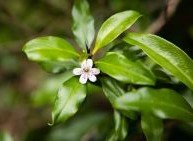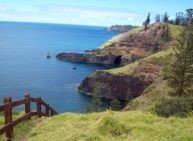Conservation
Norfolk Island National Park work continuously to manage feral animals and weeds, rehabilitate the park and protect our rare animals and plants.
Protecting endangered birds
Native birds are an important feature of the park and much of our work centres on protecting their populations.
The Norfolk Island morepork owl or boobook (Ninox novaeseelandiae undulata) nearly went extinct in the mid-1980s, with just one female bird, nicknamed ‘Miamiti’, left on the island (and therefore in the world).
Two male New Zealand morepork owls were introduced as breeding partners and Miamiti successfully bred with one of the males. Although the genetically pure Norfolk Island morepork is gone, the population of the resulting hybrid species is recovering. These birds are still listed as endangered.
The Norfolk Island green parrot (Cyanoramphus cookii) is also listed as endangered. But thanks to concerted rodent control and assisted nesting programs, the species has recently undergone a population boom. Recent estimates put the population at 300–350 birds.
Native forest rehabilitation
Subtropical rainforest once covered the whole island, but is now restricted mainly to the national park.
To protect the remaining native forest, we do a lot of weed management. The island has a number of invasive species including the cherry guava plant (known locally as ‘porpei’) which has taken over large sections of the park. Removing weed infestations and revegetating the cleared sites with native and endemic species is a major ongoing project.
Because of Norfolk Island’s strict biosecurity regulations, all native plants must be grown on the island. Our rangers collect seeds from plants in the park and germinate them in our nursery before planting them in rehabilitation areas.
A number of critically endangered endemic plant species, such as broadleaf meryta (Meryta latifolia), can now be seen in abundance along walking trails in the park.
Sign up for Norfolk News
Sign up for our monthly newsletter to receive updates about Norfolk Island National Park.




